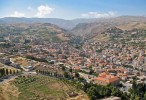Revenues for hotel spas in Dubai increased by 45.5% in Q1 2010 compared to the same period in 2009.
The figures have been tracked by the Ernst & Young Spa Benchmark Survey, which compiles monthly performance reviews of five-star hotel spas in the emirate.
Just as hotels measure revPAR, the Spa Benchmark tracks revPATH — revenue per available treatment room hour.
In Q1 2010, revPATH increased 5.5% from Q1 2009 to AED 77 (US $20) and year-to-date utilisation of treatment room hours rose to 25% in Q1 2010 from 24% in Q1 2009.

| Advertisement |
Year-to-Date utilisation of therapists’ hours stood at 54% in Q1 2010, which was an increase of 6.5% from 47.5% in Q1 2009.
The findings suggest that Dubai spa managers have achieved better scheduling and higher staffing efficiencies in 2010.
Principal for real estate, hospitality and leisure, Ernst & Young MENA, Paul Arnold commented: “Dubai hotel spa operators are beginning to incorporate formal reporting techniques and use standardised metrics towards evaluating their spa performance. Increased attention to operational diagnostics and business improvement strategies are important factors underlying the positive trends in spa performance.”
The Survey also revealed a shift in consumer behaviour, with a larger proportion of hotel guests now using spa facilities.
In Q1 2010, 61% of spa treatments were booked by hotel guests while non-hotel guests or day spa visitors booked only 39%. On a monthly basis, the percentage of hotel guests visiting spas ranged between 60% and 62%, which is higher than the 48% to 58% range witnessed during all the months in 2009.
Ernst & Young MENA spa industry specialist Nikita Sarkar said: “The increasing share of hotel guest visitors to spas, combined with the increase in aggregate spa revenues, is a positive trend as it points towards the return of hotel guests’ propensity to spend on spa services. Dubai hotel spa operators may now be able to create more effective marketing and promotion programmes and move away from price-based discounting of last year.”
Arnold added that to maximise revenues in 2010, all potential revenue streams would have to be developed — treatment, retail and fitness. Total revenues in 2009 were comprised of treatments (70%); retail (9%); fitness and membership (19%) and other charges (2%).
“In 2010, the focus will need to be on maximising revenue generation potential from each of the revenue streams. For example, retail sales remain an under-exploited component of spa operations, contributing only 10.6% to overall Dubai hotel spa revenues in Q1 2010, whereas some high-performing spas have achieved up to 25% revenue contribution from retail,” said Arnold.









 Search our database of more than 2,700 industry companies
Search our database of more than 2,700 industry companies









